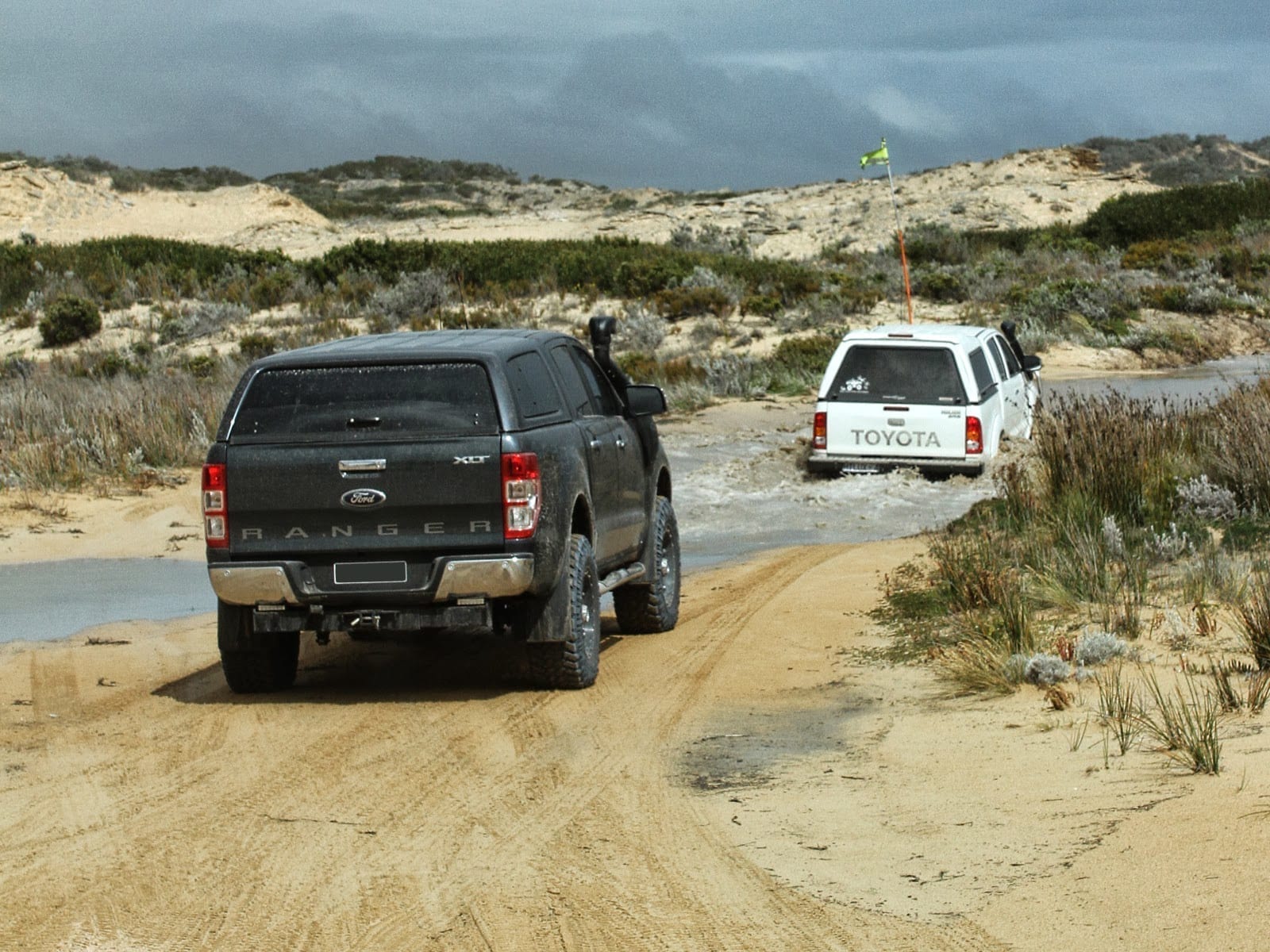Here are a few useful tips that the experienced team at Total 4×4 have picked up over the years:
Tyre Pressure
Lowering the pressure in your 4wd tyres increases the length of the footprint (and the width of course) flattening the sand before you drive over it.
Replace the pressure ASAP to lessen the damage to the side wall.
Deflators attached to the valves, then removed before driving, allow the tyres to deflate to the same pressure.
Soft Sand
Before you attempt to de-bog yourself always scoop the sand from in front and behind all wheels.
There is no ideal tyre pressure for your 4WD – drop the pressure from Road pressure to approx 20 psi in the first instance, then if you’re still not getting adequate traction drop to 15/16psi. If you go down to 15 psi straight away, you can spin the tyre off the rim, then you are in real trouble. 10 Psi has been used to carefully extract yourself from the soft stuff.
Gravel and Rocky Terrain
There is merit in lowering tyre pressures whilst driving on gravel and rocky surfaces. It allows the tyre to wrap around the large rocks and follow the contour of the terrain, also it causes less damage to the environment.
Beach Driving
When driving on the beach the tide is always coming in: Bremer Bay in ‘81 my Landcruiser FJ55 (ex Telecom orange ) 10 km along the beach not a soul in sight, the TOYOTA hit a buried compost heap of seaweed etc and , by the time we extracted the 4wd from the sand the water was lapping up against the tyres – Valuable lesson, Up to your knees in seawater and very agro partner and family.
It is recommended to drive as far as possible from the water, within reason of course, the sand may seem harder but if you do get stuck the ocean can be fairly cruel when it comes to damage.
When turning around on the sand always turn away from the water , run up the sand dune or hill then reverse @ 90 degrees to the ocean over the tracks you have already made to finish the 3 point turn.
Equipment Recommended: Exhaust jack 4 tonne, long handled shovel, Air compressor, Tyre Gauge, Bog mats either flexible or hard plastic (Max Trax).
Maintenance
After 4wding it’s a good idea to hose down all of your equipment, this gives you a closer look at the suspension, under body, and mechanical components for any signs of damage, unless of course, you are seeking comments on the thick mud spattered all over your car.
A spray with CRC or WD40 on the electrical gear will help to lessen the corrosive nature of salt water.
Your Recovery gear (snatch strap ,winch extension strap etc ) will also need flushing if you’ve been playing in the mud.
Emergency Equipment
A valuable addition to any 4wders equipment would be a land based EPIRB , this can be activated in an emergency situation, the signal is sent via satellite to Canberra where the relevant authorities will be notified and hopefully you will be rescued from your predicament.
A pack of cards could be another necessity in your tool kit, according to Jack Absalom @ Safe Outback Travel. If you are bogged with no help in sight boil the billy to make a brew then get the cards out and start playing Solitaire.
Before you know it someone will stick their head over your shoulder and say the Red 10 goes on the Black Jack then onto the Red Queen, he can then give you a hand to get you out of trouble.
